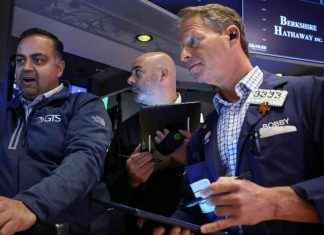Marcy-Holmes is the oldest neighborhood in Minneapolis, but people passing through — or renting an apartment, or opening a business — often think they’re somewhere else.
Maybe Northeast or the University of Minnesota? Close, but no. How about Dinkytown or St. Anthony Main? Technically, yes, but those are just pieces of it.
Tired of misidentification and eager to claim their own identity, Marcy-Holmes residents are trying to define who they are and what makes their neighborhood special. The effort to pin down a brand comes at a time when neighborhoods across the city are figuring out how to build and maintain their identities in ways that preserve what they value — from saving old houses in Linden Hills to grass-roots activism in Seward — while also preparing for the future. Neighborhood activists say it’s essential to build that sense of community amid ongoing change.
“This is a hot topic right now in any city that’s seeing growth and development,” said John Capecci, who co-chairs the Marcy-Holmes Neighborhood Association Creative Places Committee. “What we’ve seen over and over again … is if you don’t celebrate, claim your identity, then someone might assign one to you that you don’t want.”
Branding efforts in Minneapolis have had mixed results. The North Loop, with its bustling restaurants, glitzy apartments and high-end stores, is the neighborhood that everyone wants to be. On the other side of downtown, the newly named WeDo and East Town districts haven’t inspired the same envy.
Penny Petersen advocated for the Marcy-Holmes neighborhood name in honor of two local schools in the 1970s. She isn’t sure it works anymore.
“Maybe we just need a new name, and maybe that’s the identity crisis,” she said. “If you end up with a new name, maybe you end up with a new identity.”
What’s in a name?
Marcy-Holmes traces its roots back to Minneapolis’ earliest days, when the neighborhood was part of the town of St. Anthony. Residents say they don’t want to lose that connection to the past — visible in landmarks like the Stone Arch Bridge and converted factories — as the neighborhood evolves.
History anchors neighborhoods throughout Minneapolis, where official boundaries were drawn in 1959 but many neighborhood groups have existed longer.
“I think [history is] kind of a point of pride that a lot of people do have,” said JoEllen Haugo, a 25-year Linden Hills resident who co-chairs that neighborhood’s History Study Group.
But sometimes even an old name needs help to stick.
The North Loop in downtown Minneapolis used to be lumped in with the nearby Warehouse District, until the neighborhood association hired a local firm to make the North Loop name into a formal brand. Since then, restaurants, retailers and new residents have flocked to the area, said Fritz Kroll, a Realtor who chairs the neighborhood board’s livability committee.
“It’s made it a more cohesive neighborhood,” Kroll said. “You say where you live and people actually know where it is now.”
Not so in Marcy-Holmes. Chef Alex Roberts opened Alma in the neighborhood in 1999, and Brasa eight years later. Both spots have become destinations, but he said people still think they’re in Northeast.
His idea? Call the whole area East Minneapolis — a throwback to when it was known as the Eastern District.
“It’s all on the east side of the river, right?” Roberts said. “I’d love to see that come back.”
‘We know who we are’
Elsewhere in the city, particularly on the North Side, residents say they’ve seen what happens when a neighborhood’s identity is left up to someone else.
“The public narrative, the commonplace narrative, of north Minneapolis is one that tends to be negative and narrow and largely written by others,” said DeAnna Cummings, co-founder and CEO of Juxtaposition Arts.
North Siders don’t deny the area has challenges. But they say the view from the outside — of violence, of poverty, of neglect — can overpower the strong sense of community that exists on the inside and result in a lack of investment and resources.
“We need to be able to become sustainable within our community first to then be able to push that narrative out,” said Marcus Owens, who grew up in Homewood and runs a nonprofit in Near North.
Just a few miles away in Marcy-Holmes, about 50 community members gathered at the Soap Factory on a recent February evening to start weaving their own narrative. They talked about history and preservation, about the diverse array of factors that make the neighborhood feel like home, about the possibility of having more than one identity.
“It’s very clear that Marcy-Holmes might have an identity crisis for a number of reasons,” said Petersen, who attended the event. “Or maybe it doesn’t — maybe we know who we are, and that’s fine.”
Our editors found this article on this site using Google and regenerated it for our readers.







